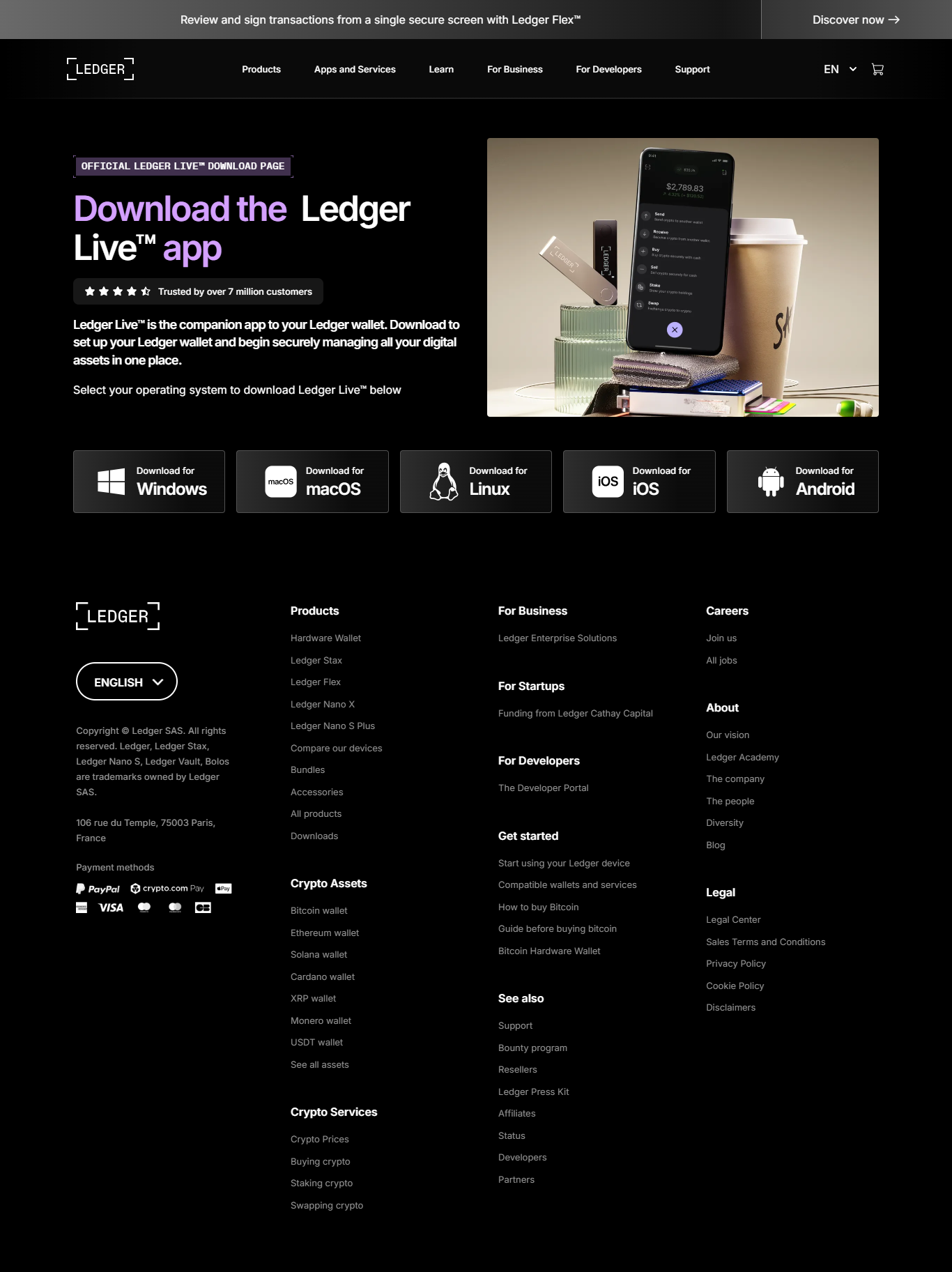Ledger.com/Start is the official gateway for new and experienced users setting up their Ledger hardware wallet. With an emphasis on security, authenticity, and digital asset protection, this onboarding experience provides precise steps to safeguard your cryptocurrencies from online and offline risks. Ledger is globally recognized for its advanced security architecture, integrating both hardware-level protection and rigorous firmware verification.
1. Authentic Device Verification
Always begin by purchasing directly from Ledger.com or trusted partners. Verify the device packaging and serial number to ensure no tampering has occurred. During setup, initialize your device with a unique PIN and a 24-word recovery phrase. This recovery phrase is your ultimate backup — never store it digitally or share it with anyone, not even Ledger support.
2. Built-in Security Architecture
Each Ledger device includes a certified Secure Element (SE) chip — the same type of chip used in passports and credit cards. It isolates private keys from your computer or mobile device, preventing malware from accessing your crypto. All transactions must be confirmed manually on the device, ensuring you maintain full control of every signature.
3. Firmware and Software Integrity
Firmware updates are cryptographically signed by Ledger, and Ledger Live uses end-to-end encryption to communicate with the device. Verify update requests directly on your device screen to confirm authenticity. Always download Ledger Live from the official site to avoid counterfeit versions.
4. Protecting Ledger.com/Start and Your Browser Session
Access Ledger.com/Start only via secure HTTPS connections. Check for the valid SSL certificate before entering any information. Avoid public Wi-Fi and browser extensions not necessary for setup. Use private browsing or incognito mode when possible to prevent data persistence.
- Strict-Transport-Security to enforce HTTPS
- Content-Security-Policy to limit sources
- X-Frame-Options: DENY to prevent clickjacking
- X-Content-Type-Options: nosniff to prevent MIME-type confusion
5. Best Operational Practices
Maintain your computer’s OS, browser, and antivirus up to date. Avoid connecting your Ledger device to shared systems or unfamiliar USB ports. Keep your firmware updated through Ledger Live and always confirm transactions on your device screen. For institutions, use multi-signature wallets and hardware-backed key management policies to reduce risk.
6. Backup, Continuity, and Recovery
Store your recovery phrase in multiple secure, offline locations, ideally using fireproof and waterproof storage. Consider encrypted, offline metal seed storage for long-term durability. Test your recovery process with a secondary device in a controlled environment to ensure continuity of access.
7. Hosting Security and Site Hardening
To keep the onboarding page itself secure, host it behind a reliable CDN such as Cloudflare or Akamai. Enable DDoS protection, routine malware scans, and server-side backups. Apply version control to monitor unauthorized code changes and use Subresource Integrity (SRI) for any external scripts or assets. Enable 2FA and restricted access for site administrators.
8. Privacy and Anti-Phishing Practices
Bookmark Ledger.com/Start to avoid visiting lookalike phishing sites. Do not click links in unsolicited messages or emails claiming to offer Ledger support. Official Ledger representatives never ask for your 24-word recovery phrase or remote access to your computer. When in doubt, verify contact details directly through Ledger Support.
9. Continuous Improvement and Transparency
Ledger continually undergoes independent audits and penetration testing to maintain the highest standards of security. Transparency reports are published to foster community trust. Stay informed by following official Ledger channels and subscribing to verified updates.
Ledger.com/Start embodies the balance between usability and rigorous cybersecurity — empowering users to manage their digital wealth confidently while minimizing exposure to emerging threats.
